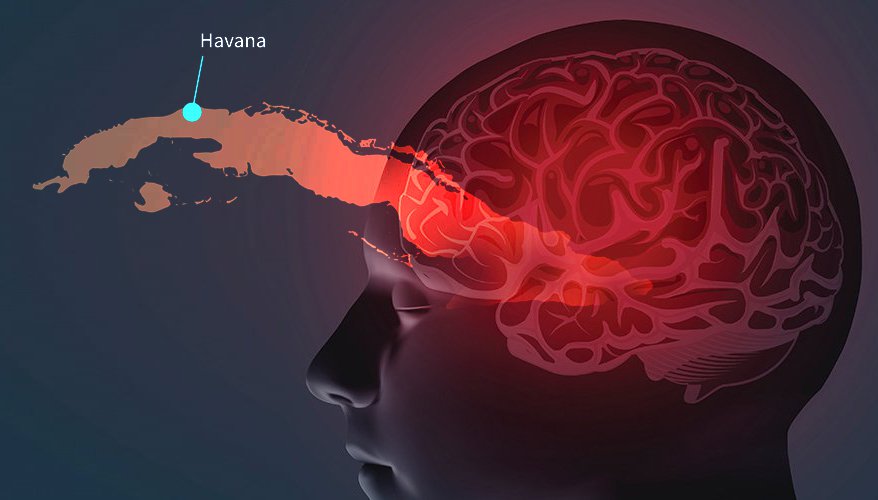Already a subscriber? Make sure to log into your account before viewing this content. You can access your account by hitting the “login” button on the top right corner. Still unable to see the content after signing in? Make sure your card on file is up-to-date.
A 60 Minutes report has recently shed light on the persistent mystery surrounding Havana Syndrome, indicating for the first time that there may be evidence of an adversary’s involvement in the attacks.
Sources told 60 Minutes that they possess evidence suggesting a weapon has been used against American officials. This claim marks a significant deviation from earlier narratives that largely dismissed the notion of external attacks on US and Canadian personnel. The investigators from the FBI, CIA, and State Department are exploring theories that an unseen weapon might be the cause of the diverse and debilitating symptoms experienced by the victims.
A @60minutes report looked at several incidents of Havana Syndrome that have led some to believe Russia may be responsible for those attacks.
— CBS Mornings (@CBSMornings) April 1, 2024
“There are significant national security implications of Havana Syndrome,” @sam_vinograd says. https://t.co/wz03Wjngim pic.twitter.com/bJ9IsBEjTt
Scott Pelley of 60 Minutes said, “For the first time, we have evidence of who might be responsible. Many U.S. officials and their families believe they’ve been injured by a secret weapon in the hands of a foreign adversary.” The collaborative report, which also involves Germany’s Der Spiegel and The Insider from Russia, hinted at a car chase in Florida as potentially providing a vital clue towards establishing a Russian connection to the incidents. However, the details remain closely guarded, with Pelley stating, “A car chase in Florida may have provided the vital clue to the origin of the incidents.”
Greg Edgreen, a now-retired Army lieutenant colonel who ran the Pentagon investigation into what officials call “anomalous health incidents,” said, “Unfortunately I can’t get into specifics, based on the classification. But I can tell you at a very early stage, I started to focus on Moscow.” Sources speaking to 60 Minutes said that the Russian intelligence unit 29155 is likely involved in the attacks.
This acknowledgment opens up new avenues for understanding the incidents that have left over a thousand American government employees suffering from ailments ranging from acute headaches to cognitive impairments. The symptoms were first noted in Havana, Cuba, but similar cases have since been reported in Russia, China, India, Germany, Latin America, and even Washington, DC.
Mark Zaid, a Washington, DC lawyer who has represented several affected individuals, said that people have been impacted by this issue for 50+ years. He said, “In fact, the NSA admitted to me in writing back in 2014 that it knew of intelligence from 2012 about these incidents. We know the CIA has classified info from the 1980s and 1990s without a doubt.”
This comes as a US government report in 2023 said it was “very unlikely” that a foreign adversary was behind the mysterious brain injuries suffered by various government officials.
In a statement, the Office of the Director of National Intelligence said, “We continue to closely examine anomalous health incidents (AHIs), particularly in areas we have identified as requiring additional research and analysis. Most IC agencies have concluded that it is very unlikely a foreign adversary is responsible for the reported AHIs. IC agencies have varying confidence levels because we still have gaps given the challenges collecting on foreign adversaries—as we do on many issues involving them. As part of its review, the IC identified critical assumptions surrounding the initial AHIs reported in Cuba from 2016 to 2018, which framed the IC’s understanding of this phenomenon, but were not borne out by subsequent medical and technical analysis. In light of this and the evidence that points away from a foreign adversary, causal mechanism, or unique syndromes linked to AHIs, IC agencies assess those symptoms reported by U.S. personnel probably were the result of factors that did not involve a foreign adversary. These findings do not call into question the very real experiences and symptoms that our colleagues and their family members have reported. We continue to prioritize our work on such incidents, allocating resources and expertise across the government, pursuing multiple lines of inquiry and seeking information to fill the gaps we have identified.”






